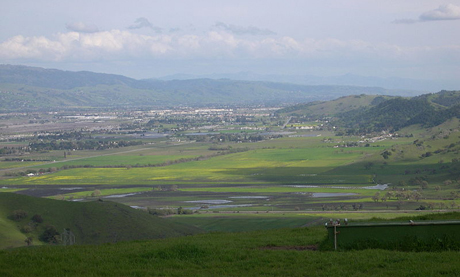A recent discussion within our community has focused on building even more single-family homes in areas that are reserved for jobs or fall outside of the urban service area. The proposal would allow those who convert industrial land to pay a fee per housing unit created. Those dollars would then be used to purchase open space in Coyote Valley.
Although this idea may be worthy of discussion in theory, my concern is that such land use decisions would ultimately hurt San Jose’s economy.
Here are my views on land use in San Jose:
1. Growing San Jose beyond its current boundaries, solely focused on housing, is BAD. It would cost more money to extend sewers, road infrastructure and police services to cover a larger area.
2. Building single-family homes on large pieces of land is not ideal for any city, in terms of revenue generation. Single-family homes not only use up more land, but they also fail to generate significant tax and fee revenue payable to the city. By comparison, high-density market rate development optimizes land use and generates increased tax and fee revenue for our city, which then can be utilized to pay for services.
3. San Jose has ample land already zoned for housing, and some 20,000 housing units that have already been approved but not yet built. There is no need to rezone more land in the short term, while the pipeline of pre-approved projects is still full. Scarcity will help San Jose get the type of mixed-use developments that people relish in other cities, like Portland, Seattle and Vancouver.
4. Approving housing that is exempted from property tax is short sighted, since we do not pay city employees with goodwill. Instead, we pay them with tax revenue. I have consistently voted against these types of developments—ongoing revenue is needed to cover the additional city services residents demand.
Ultimately, the future of our city rests on the will of San Jose voters. If voters choose political representatives that later vote to allow housing build-outs in Coyote Valley, South Almaden Valley Reserve and other industrial zoned parcels, then those same voters must be willing to accept fewer city services. Voters need to keep this connection in mind at the ballot box. How San Jose grows has a direct effect on revenues and services.
I understand that, as a candidate for mayor in 2014, some of my positions on land use may put me at a fundraising disadvantage, in terms of garnering contributions from certain housing developers. Sometimes my goals as a city representative are in alignment with those of the development community, and other times they are not. My tenure on the City Council has not been about their interests, but rather with the objective of creating a better overall city.
There are some development projects that I am happy to support, because they are fiscally pragmatic and are located in strategic locations. For example, I am supporting a new mixed-use development that is on The Alameda, next to the Whole Foods Market currently under construction. This development will have 98 units of housing, located above 22,000 square feet of retail and office, all on one compact acre. This location is ideal, because it lies within the existing infrastructure of our city, and is walking distance to retail, public transportation and our downtown.
Any policy decisions that directly affect land use issues need to take a more long-term vision in scope. Ultimately, my hope is that San Joseans will realize that, through land use policy, we DO have control and CAN make our city better. Alternatively, we can continue to go down the same ineffective path and repeat the mistakes of the past. I know I am not alone in thinking that San Jose deserves better.
Pierluigi Oliverio is a councilmember for San Jose’s District 6.


Hey Pierluigi,
Good column.
Though I’d prefer to see even less high density “infilling”, I guess it’s preferable to housing expansion beyond our current perimeter. Coyote Valley and the foothills surrounding SJ should continue to be off limits. There’s just too much opportunity in these spaces, once San Jose finally get it’s act together, to make itself into something unique and special. Once we allow it to be covered with houses those opportunities evaporate.
But about this “infilling”- this capitulation to developer pressure using the bogus, PC excuse that it’s our duty to provide “affordable housing”. Plus the added pressure of our politicians shamelessly grubbing for federal “affordable housing” grant dollars as though qualifying for those dollars is a more laudable goal than creating a great city. These pressures should be resisted if for no other reason than to preserve our self respect.
We don’t need Washington’s money.
We don’t owe illegal aliens anything.
This is OUR city. Let’s act like it.
While I agree with the sentiment that we need to protect open space, this requires that other land is available for development. This means that within the current city footprint we need to allow for infill and market redevelopment, and not just a token amount on San Carlos and The Alameda. While I know that councilman Oliverio has to deal with a sizable NIMBY contingent in his district, if every large development takes 10+ years in order to be studied to death, the affordability situation is going to continue to remain out of hand.